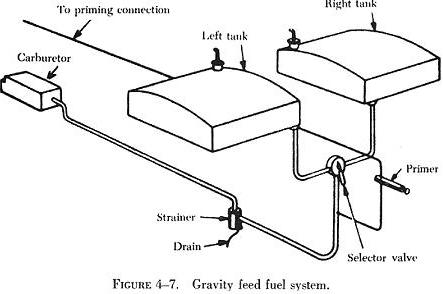The simplest type of fuel system is the gravity feed, which is still
in use on many low powered airplanes. A gravity feed system is shown in
figure 4-7. The fuel tanks are mounted above the carburetor, with gravity
causing the fuel to flow from the tanks to the carburetor. A selector valve
is provided to stop the fuel flow or to select a particular tank in the
system from which to draw fuel. A strainer filters the fuel before it reaches
the carburetor. A drain is provided for removing water and sediment trapped
at the strainer. A primer furnishes the additional fuel required for engine
starting.
